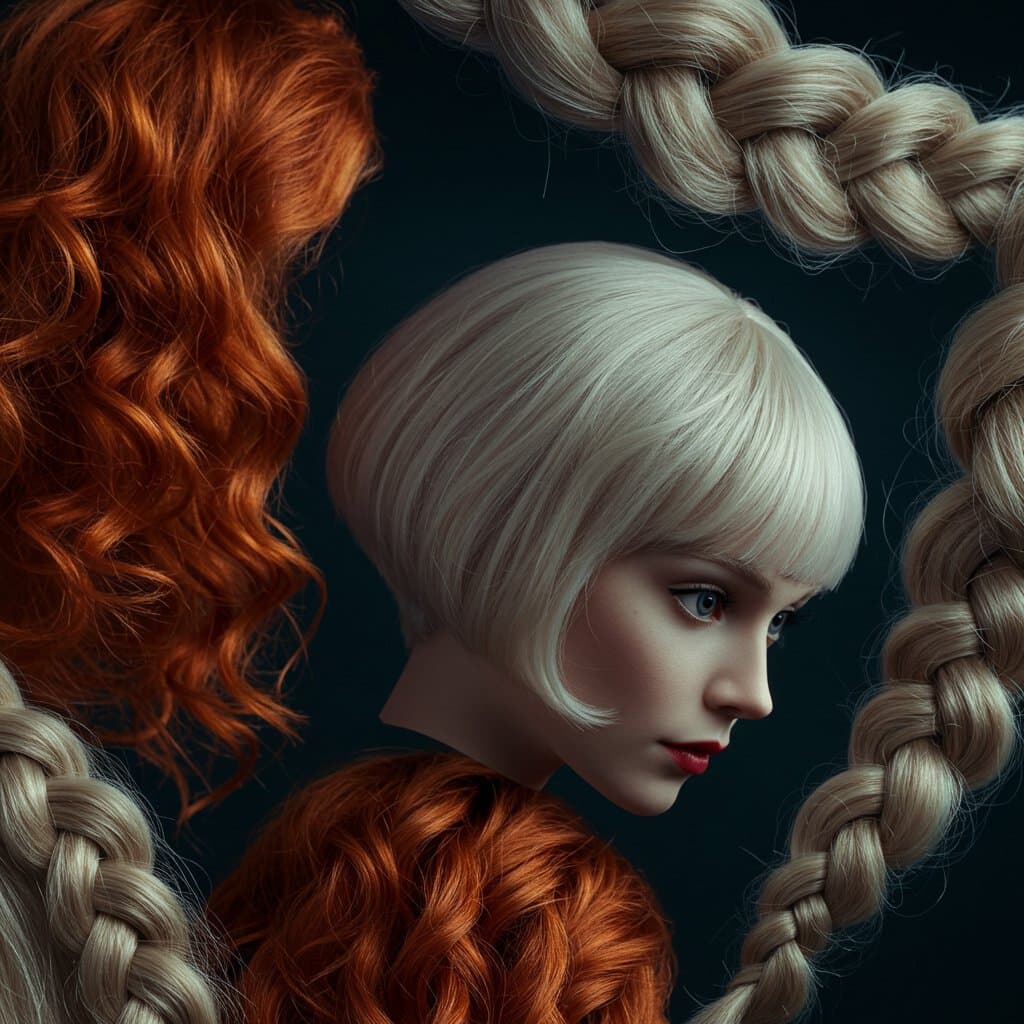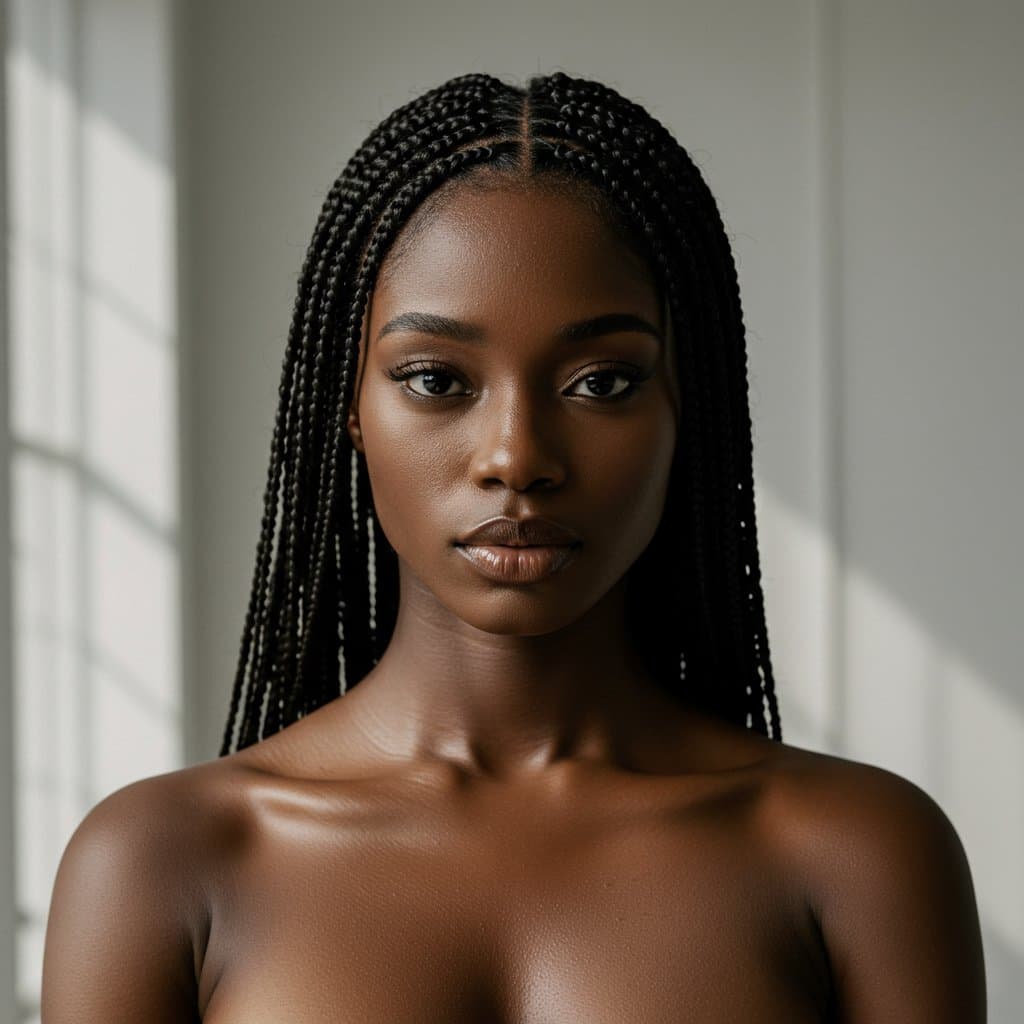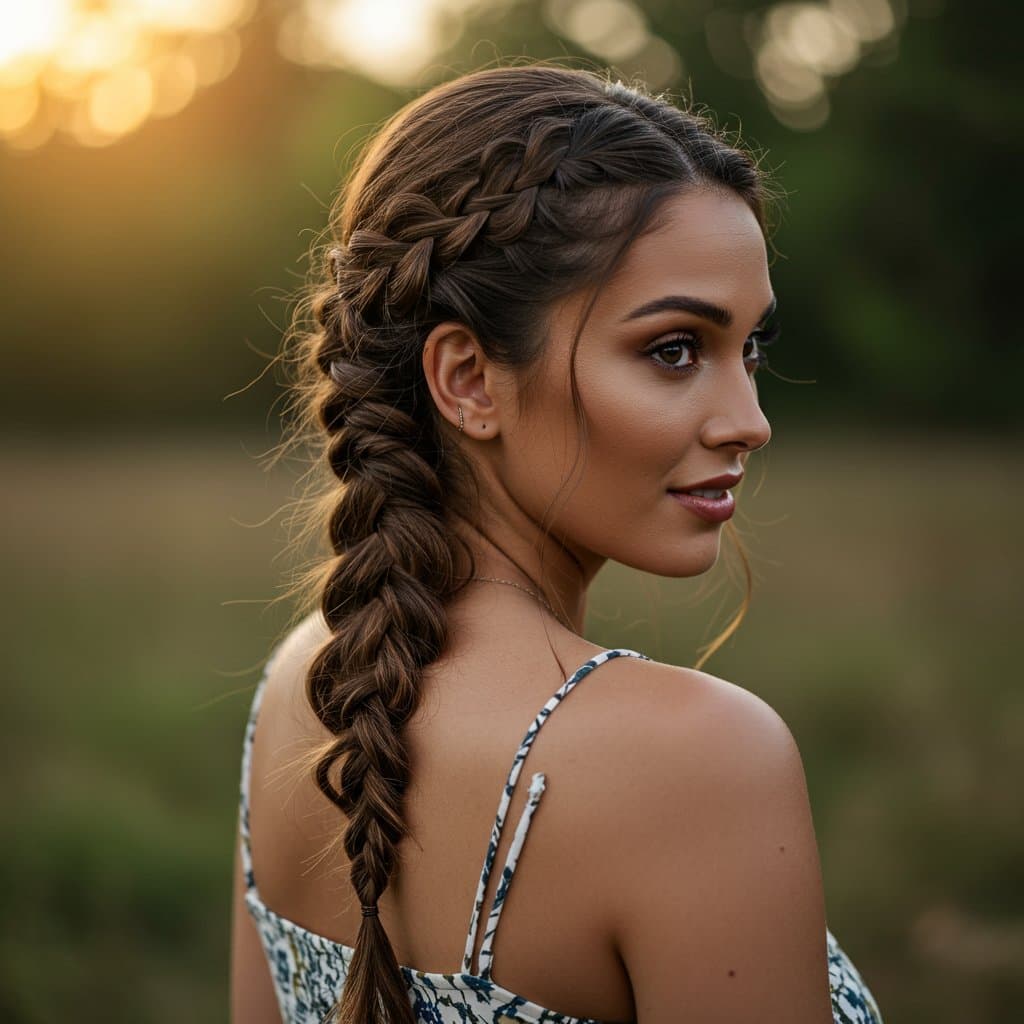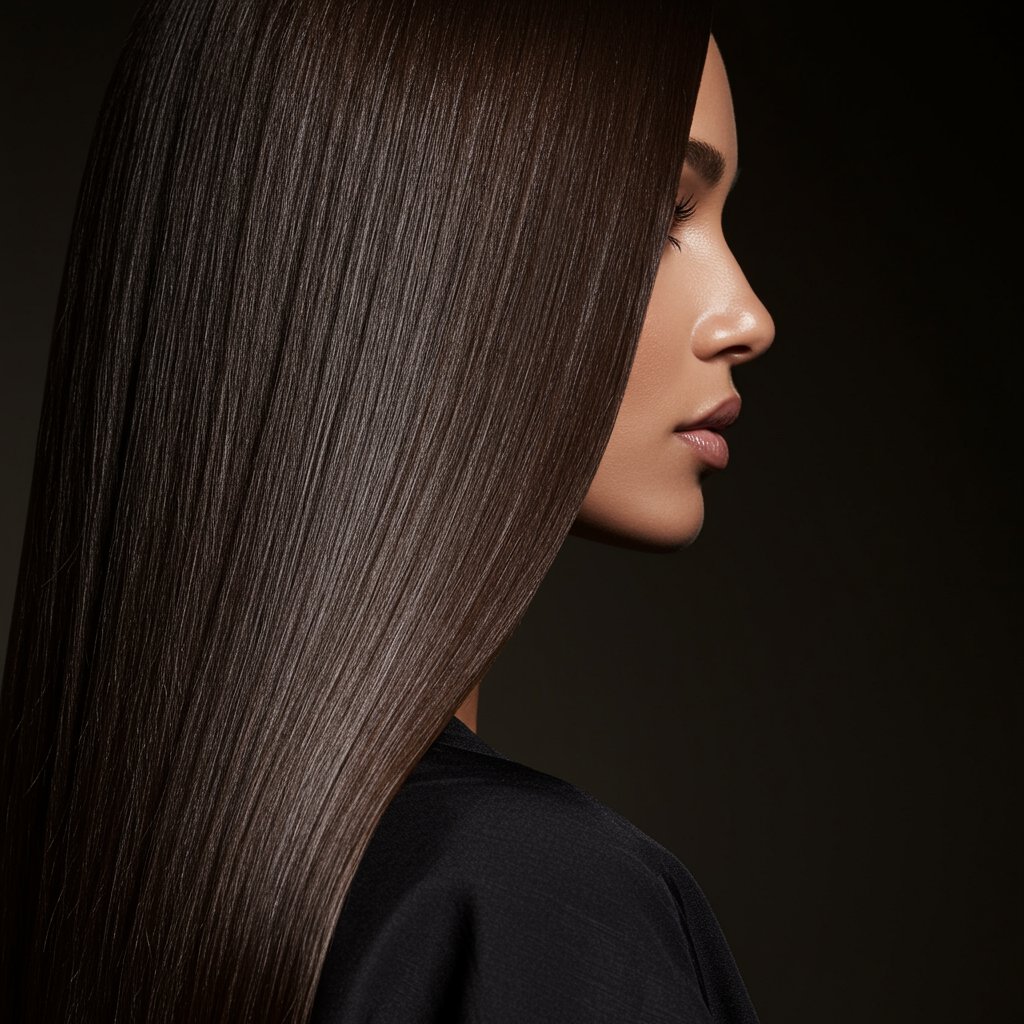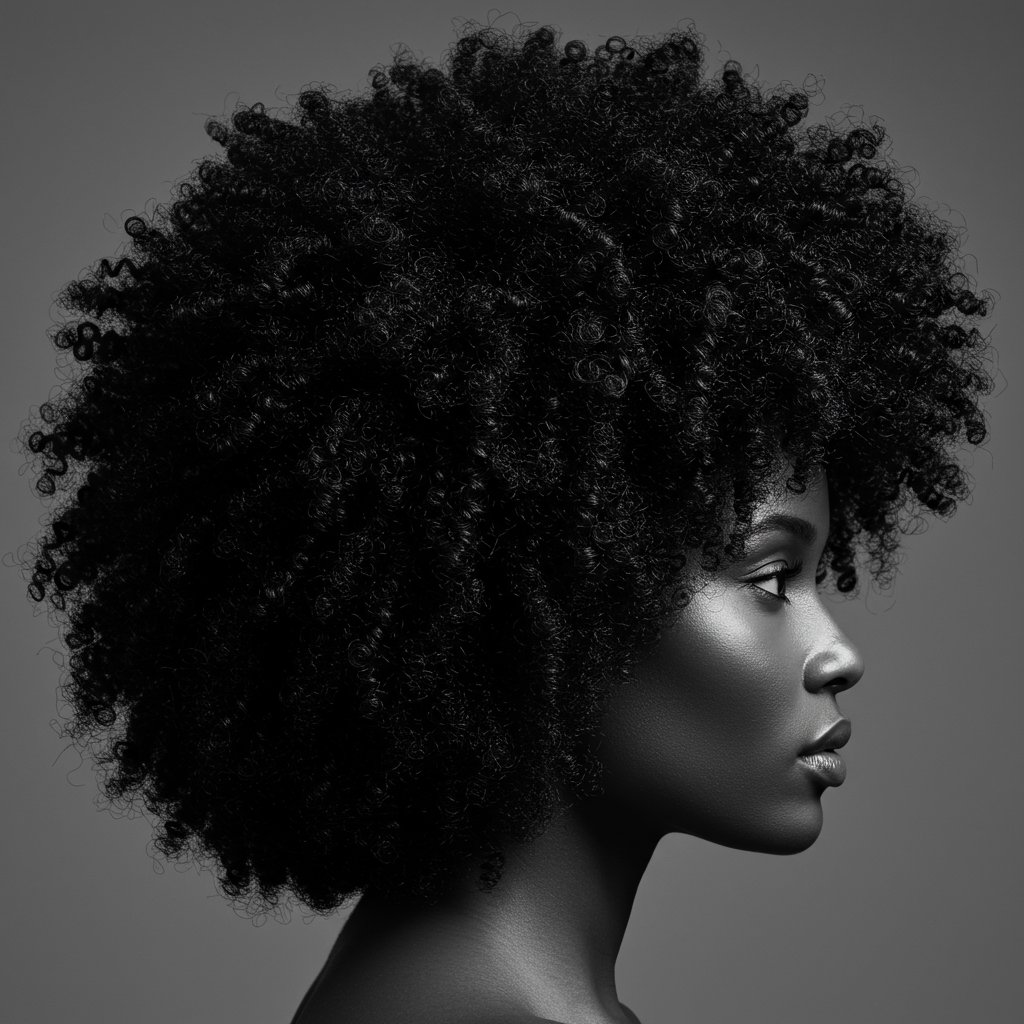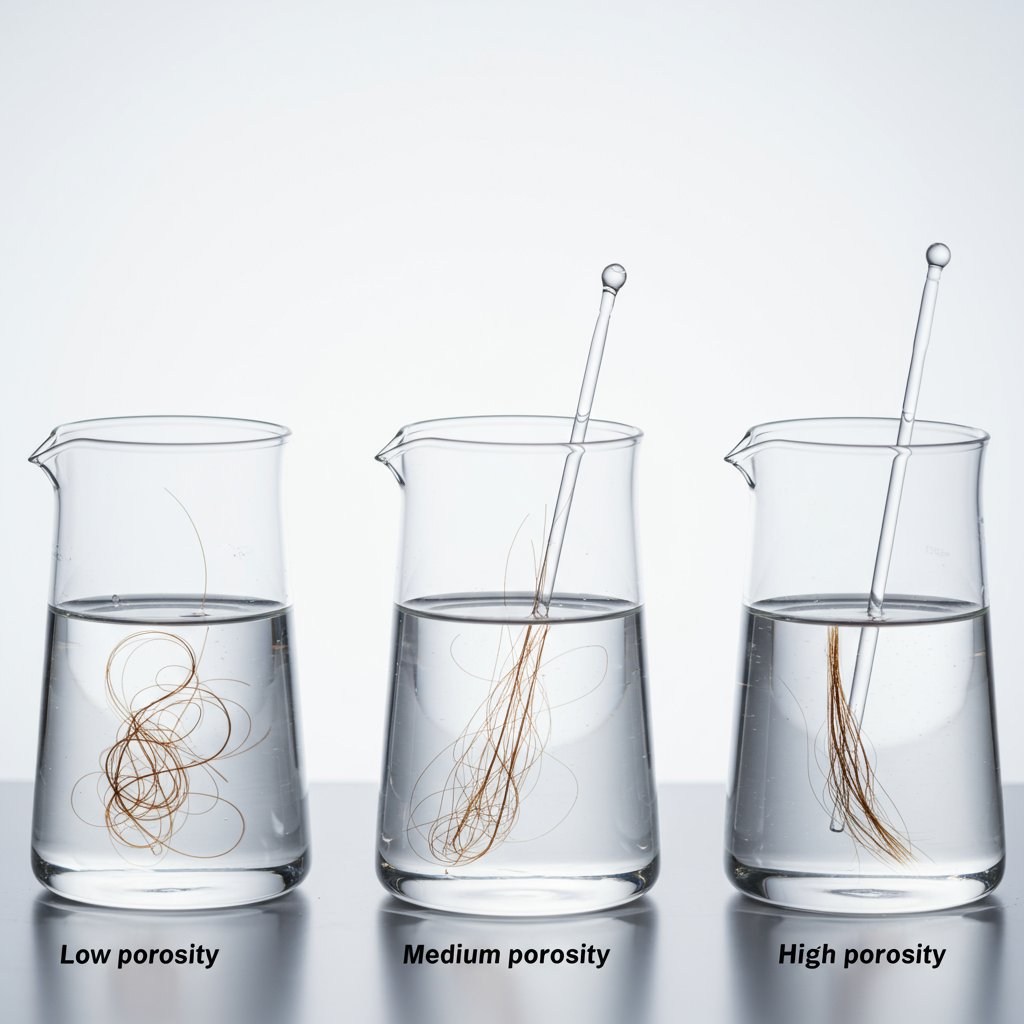Decoding Your Crown: Why Knowing Your Hair Type is a Game-Changer
Have you ever purchased a hyped-up hair product only to find it leaves your hair greasy, frizzy, or completely limp? The problem likely isn't the product, but its compatibility with your unique hair. Understanding your specific hair type is the foundational secret to unlocking a world of good hair days. It's the difference between fighting your hair and working with its natural beauty. This comprehensive guide will walk you through the widely used hair typing system, from the sleekness of 1A to the magnificent coils of 4C, so you can finally craft a care routine that celebrates and nourishes your strands.
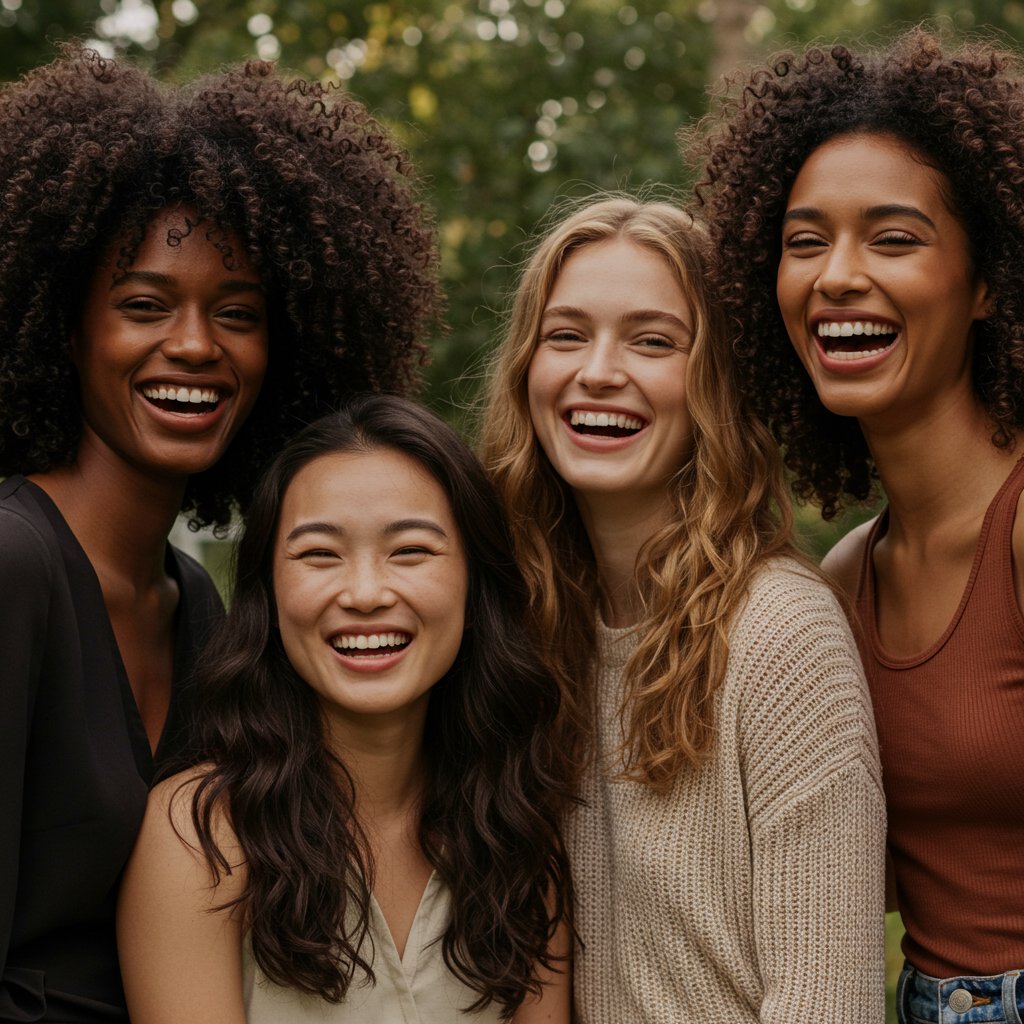
Knowing your hair type is more than just identifying if it's straight or curly; it's about understanding its specific needs. Does it crave moisture or is it easily weighed down? Is it prone to breakage or resistant to styling? Answering these questions begins with identifying your pattern, texture, and porosity. This ultimate guide to your hair type will not only help you pinpoint your exact classification but also provide actionable advice to maintain its health and vitality. Consulting with an experienced stylist can provide a professional assessment, but this guide gives you the knowledge to start the conversation and make informed decisions about your daily hair care regimen.
The Andre Walker Hair Typing System: What Do the Numbers and Letters Mean?
The hair typing system used most commonly today was created by Andre Walker, an Emmy Award-winning hairstylist. This system classifies hair into four main types based on its curl pattern, with subcategories that describe the texture and width of the strands. The numbers (1, 2, 3, 4) represent the primary category: Straight, Wavy, Curly, and Coily. The letters (A, B, C) represent the subtypes within each category, indicating the width or diameter of the hair pattern. 'A' types are typically the finest and loosest, 'B' types are in the middle, and 'C' types are the coarsest and tightest.
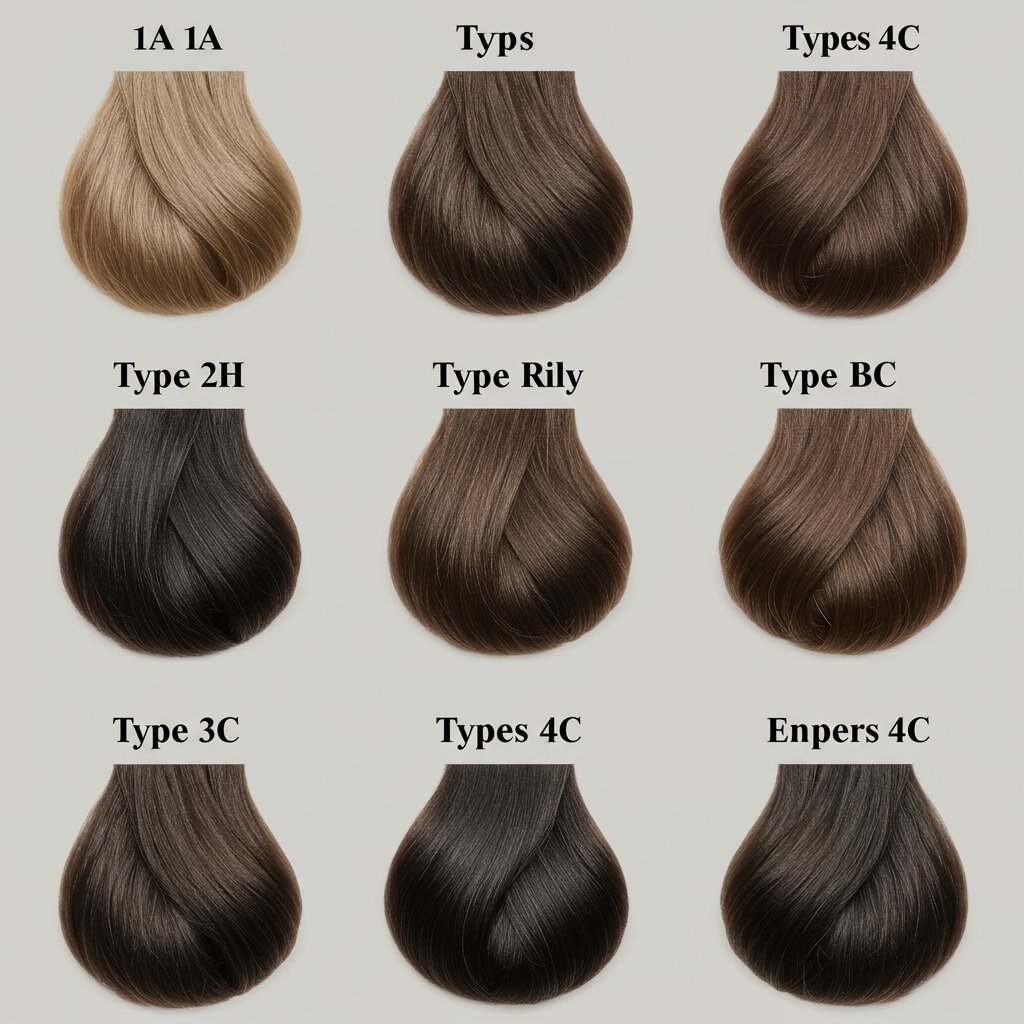
It's crucial to remember that this system is a guide, not a rigid set of rules. Many people have multiple hair types on their head—perhaps wavier at the crown and curlier underneath. The goal is to identify your dominant pattern to better select products and styling techniques. Furthermore, curl pattern is just one piece of the puzzle. Factors like porosity (how your hair absorbs moisture), density (how many strands are on your head), and thickness (the width of an individual strand) are equally important for creating a holistic and effective hair care routine. We'll explore these factors later in the guide.
Type 1 Hair: The Beauty of Straight Tresses
Type 1 hair is characterized by its lack of a natural curl pattern. The strands grow straight down from the root without bending or waving. This hair type is often very shiny because the scalp's natural oils (sebum) can travel unobstructed from the root to the tip, keeping it moisturized and protected. However, this same quality can also make Type 1 hair appear oily or greasy more quickly than other types. The challenge for this hair type is often achieving volume and texture, as it can be resistant to holding a curl.
1A: Finely Straight
This is the rarest hair type, often described as “stick-straight.” It's very fine and thin, with a soft, silky texture. 1A hair has no body or wave whatsoever and can be difficult to style, as it doesn't hold curls well. Its biggest challenge is a tendency to become oily very quickly and appear flat or limp. Care for 1A hair should focus on volumizing products, dry shampoos to absorb excess oil, and avoiding heavy creams or serums that can weigh it down.
1B: Bodied Straight
Slightly more common, 1B hair is still straight but has more body and medium texture than 1A. It's not completely flat and has a subtle bend at the ends, which allows it to hold a style, like a curl or wave, a bit better. While it can still be prone to oiliness, its medium thickness gives it more natural volume. Light texturizing sprays and mousses can enhance its body without adding weight.
1C: Coarsely Straight
1C hair is the thickest and coarsest of the straight hair types. It has a few subtle bends but no real waves. This hair type is the most resistant to styling and can be prone to frizz, especially in humid weather. While it has plenty of natural volume, it can also be difficult to manage. Smoothing serums and heat protectants are essential when styling 1C hair to combat frizz and prevent damage from high heat tools needed to manipulate its texture.
Type 2 Hair: Riding the Waves
Type 2 hair sits in the beautiful middle ground between straight and curly, characterized by its natural S-shaped pattern. Wavy hair is typically flatter at the root and forms more defined waves from the mid-lengths to the ends. This hair type has more volume than Type 1 but is often more prone to frizz. The key to caring for wavy hair is finding a balance: providing enough moisture to define the waves without using products so heavy they pull the pattern out, leaving it limp and lifeless.
2A: Tousled Waves
2A hair has a fine, thin texture with a gentle, tousled S-pattern. The waves are loose and can be easily straightened. This subtype is often weighed down by heavy products, causing the waves to fall flat. The best approach is to use lightweight products like sea salt sprays or light mousses and to scrunch the hair while it's damp to encourage the wave pattern. A diffuser can also help add volume at the roots.
2B: Defined Waves
2B waves are more defined and start closer to the mid-length of the hair. The texture is medium, and it's more prone to frizz than 2A, especially at the crown. While it holds a style well, it can also be resistant to styling when you want to wear it straight. To enhance 2B waves, use anti-frizz serums and mousses with a bit more hold. Plopping the hair in a microfiber towel after washing can help define the wave pattern without creating frizz.
2C: Strong Waves
This is the coarsest and thickest of the wavy hair types. 2C waves are well-defined and start close to the root. They often consist of a few actual ringlets mixed in with the S-shaped waves. This hair type is highly susceptible to frizz and requires more moisture than its counterparts. Leave-in conditioners, curl creams, and regular deep conditioning treatments are essential to keep 2C waves hydrated, defined, and manageable.
Type 3 Hair: Embracing the Curls
Type 3 hair is defined by its distinct, springy curls that form right from the root. These curls can range from loose, loopy ringlets to tight, springy corkscrews. Unlike wavy hair, which follows an S-pattern, curly hair forms a full spiral. This hair type is often full of body and volume but is also highly prone to dryness and frizz. The spiral shape of the hair strand makes it difficult for the scalp's natural oils to travel down the hair shaft, leaving the ends dry and vulnerable to breakage. Hydration is the number one priority for all Type 3 hair.
3A: Loose Curls
3A curls are large, loose spirals that are about the size of a piece of sidewalk chalk. They are typically well-defined and have a natural shine. However, they can lose definition and become frizzy without the right care. Lightweight curl creams and gels can provide definition without weighing the curls down. Avoid over-touching the hair while it dries to prevent disrupting the curl pattern and causing frizz.
3B: Springy Curls
3B curls are more tightly wound and springy, with a circumference similar to a Sharpie marker. This hair type has a lot of volume but can lack shine and be quite coarse. It is very prone to dryness and requires significant moisture. Co-washing (washing with conditioner only) or using sulfate-free shampoos is highly recommended. Apply leave-in conditioners and styling creams to wet hair to lock in moisture and define the curl pattern.
3C: Tight Corkscrews
3C curls are tight, densely packed corkscrews about the size of a pencil. This hair type, often called 'curly-coily,' has incredible volume but is also the most prone to dryness and shrinkage within the Type 3 category. The L.O.C. method (Leave-in, Oil, Cream) is fantastic for maximizing moisture retention. Regular deep conditioning treatments and protein masks are essential to keep 3C curls strong, hydrated, and healthy.
Type 4 Hair: The Majesty of Coils
Type 4 hair, also known as coily or kinky hair, is characterized by its very tight curl pattern. The strands are often fine and wiry, forming small zig-zags or coils right from the scalp. This hair type is the most fragile and driest of all, as its tight coil structure creates many twists and turns that make it difficult for sebum to moisturize the strand. It experiences the most significant amount of shrinkage, sometimes up to 75% of its actual length. The primary focus for Type 4 hair is moisture, moisture, and more moisture, along with gentle handling to prevent breakage.
4A: Defined Coils
4A hair features tight, S-patterned coils that are about the size of a crochet needle. The coil pattern is visible and well-defined when the hair is healthy and moisturized. It has a springy texture and can be wiry. Wash-and-go styles work well for 4A hair, but it requires heavy creams and butters to stay hydrated and defined. Use a Denman brush on wet, conditioned hair to clump coils together for better definition.
4B: Zig-Zag Coils
4B strands have a Z-shaped pattern with sharp angles, rather than a defined coil or curl. This hair type is fluffy and can have a cotton-like feel. Its pattern is less defined, and it is highly prone to shrinkage. 4B hair thrives with moisturizing butters and oils. Styles that stretch the hair, such as twist-outs, braid-outs, and Bantu knots, are excellent for showcasing its length and defining its texture.
4C: Tightly Packed Coils
4C hair has the tightest coil pattern, so tight that it may not have a visible, defined curl pattern without styling. The strands are densely packed and experience extreme shrinkage. It is the most fragile of all hair types and requires a gentle touch and an abundance of moisture. Protective styles like braids, twists, and locs are excellent for protecting the delicate ends of 4C hair. The L.O.C. or L.C.O. (Leave-in, Cream, Oil) methods are critical for sealing in moisture and preventing breakage.
Beyond the Chart: Porosity, Density, and Thickness
Understanding your hair type is more than just identifying your curl pattern. Three other critical factors determine how your hair behaves and responds to products: porosity, density, and thickness. A person with fine, low-density 3A curls will have a completely different routine than someone with coarse, high-density 3A curls.
Hair Porosity: Your Hair's Thirst Level
Porosity refers to your hair's ability to absorb and retain moisture. It's determined by the structure of your hair's cuticle layer.
- Low Porosity: The cuticles are tightly packed. Hair takes a long time to get wet and a long time to dry. It's prone to product build-up because products sit on top of the hair rather than being absorbed. Use lightweight, water-based products and apply gentle heat (like a steamer or warm towel) during deep conditioning to help open the cuticles.
- Medium (Normal) Porosity: The cuticles are looser, allowing moisture to penetrate easily and be retained well. This hair type is the easiest to manage.
- High Porosity: The cuticles have gaps or holes, often due to chemical damage or genetics. Hair absorbs moisture quickly but also loses it just as fast, leading to dryness and frizz. Use thicker creams, butters, and oils to seal in moisture and consider protein treatments to help fill the gaps in the cuticle.
Hair Density: The Number of Strands
Density refers to the number of individual hair strands on your head per square inch. To determine your density, look at your scalp in the mirror. If you can see it easily, you likely have low density. If you can barely see it, you have high density.
- Low Density: Use lightweight products to avoid weighing hair down and making it look sparse.
- High Density: Can handle heavier products like butters and rich creams to provide adequate moisture and control.
Hair Thickness (Width): Fine, Medium, or Coarse?
This refers to the width or diameter of an individual hair strand. Roll a single strand between your fingers. If you can barely feel it, you have fine hair. If you can feel it easily, you have coarse hair. Medium is somewhere in between. Fine hair is more fragile and easily weighed down, while coarse hair is stronger but can be more resistant to styling and prone to dryness.
Professional Tips for Every Hair Type
Regardless of where you fall on the hair type chart, some universal principles of hair care apply. Adopting these habits, alongside your type-specific routine, will ensure your hair remains in its healthiest state. A consultation with a professional stylist is the best way to get a personalized regimen, but these tips are a great starting point for everyone.
- Get Regular Trims: Trimming your hair every 6-8 weeks is essential for removing split ends and preventing them from traveling up the hair shaft, which causes more damage and breakage. This is non-negotiable for all hair types.
- Use a Sulfate-Free Shampoo: Sulfates can be harsh and strip the hair of its natural oils. This is particularly damaging for curly and coily hair types (3 and 4) but can also lead to oil overproduction in straight hair (Type 1).
- Never Skip Conditioner: Every hair type needs conditioner to replenish moisture and smooth the cuticle after shampooing. The type of conditioner will vary—a lightweight one for fine hair, a richer one for coarse or curly hair.
- Protect Your Hair from Heat: Always use a heat protectant spray before using any hot tools. High heat damages the hair's protein structure, leading to weakness and breakage. For tighter curl patterns, minimizing heat is always the best option.
- Sleep on Silk or Satin: Cotton pillowcases absorb moisture from your hair and cause friction, leading to frizz and breakage. A silk or satin pillowcase, bonnet, or scarf helps your hair retain moisture and reduces friction while you sleep.
Your Hair Type Questions, Answered
Q1: Can my hair type change over time?
Yes, absolutely. Hormonal changes (like puberty, pregnancy, or menopause), aging, medications, and even environmental factors can alter your hair's texture and curl pattern over time. What was once 2B might become 2C or vice versa.
Q2: Is it possible to have multiple hair types on one head?
Yes, this is very common. Many people have a combination of patterns. For example, the hair at the nape of the neck might be a 4A, while the hair at the crown is a 3C. In these cases, it's best to cater your routine to the dominant hair type or apply different products to different sections.
Q3: How do I find my hair type accurately?
The best way is to observe your hair after it has been freshly washed and allowed to air dry without any products. Look at the shape it naturally forms. Is it straight? Does it form an 'S' wave, a spiral curl, or a tight coil? This will give you the most accurate starting point.
Q4: Why is knowing my hair porosity so important?
Porosity is arguably as important, if not more important, than curl pattern. It dictates what kind of products your hair needs. Using heavy butters on low porosity hair will lead to greasy build-up, while using a light mist on high porosity hair will do nothing to combat dryness. Matching products to your porosity is key to effective moisturizing.
Q5: Do chemical treatments like coloring or relaxing affect my hair type?
Yes, significantly. Chemical treatments alter the structure of the hair shaft. Relaxers are designed to permanently straighten the hair's natural curl pattern. Bleach and dye can damage the hair's cuticle, almost always increasing its porosity and sometimes loosening the curl pattern.
Q6: Should my haircut be based on my hair type?
Definitely. The best haircut for you is one that works with your natural texture, not against it. A stylist experienced with different hair types can create a shape that enhances your pattern, reduces bulk where needed, and creates volume where desired. For example, curly hair often benefits from dry cutting techniques to create a blended shape.
Your Hair Journey Starts with Understanding
Embracing your natural hair begins with understanding it. By identifying your hair type—from its curl pattern and porosity to its density and thickness—you can finally stop the cycle of trial-and-error and start building a routine that truly works. This guide is your map to navigating the beautiful and diverse world of hair textures. Use it to choose the right products, adopt healthier habits, and learn to love the unique crown you were born with.
Your hair is a fundamental part of your identity, and caring for it should be a joyful act of self-care, not a frustrating battle. Whether your strands are 1A or 4C, they have their own unique beauty and needs. By listening to your hair and giving it what it craves, you’ll unlock a new level of health, confidence, and style. The journey to great hair isn't about changing what you have, but about celebrating it to its fullest potential.



